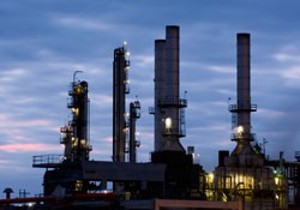U.S. oil refiners aim to run full-bore, spurning recession fears
(Reuters) - U.S. crude oil refineries plan to keep running near full throttle this quarter, according to executives and estimates, as refiners set aside worries about recession and sliding retail prices to deliver more fuel.
The operating levels will keep U.S. gasoline prices below their spring highs while providing strong earnings to refiners, analysts said. Many aim to run at rates similar to the second quarter's 94% average utilization rate.
"Refiners will continue to run hard in Q3," Tudor, Pickering, Holt refining analyst Matthew Blair said in a note this week, adding he would not be surprised "if Q3 runs weren't higher" than June given past conservative forecasts.
"We currently barely above the five-year average and still well below the five-year high," Blair said.
The largest refiner by capacity, Marathon Petroleum Corp , aims to run at 97% of its 2.9 MM barrels per date capacity with overhauls slightly trimming output. Its 13 plants ran at a 100% average rate last quarter.
Valero Energy Corp, the second-largest by capacity, expects to drive its 2.2 MMbpd system at 90% to 93% of capacity, down slightly from the second quarter's red-hot 94%.
STRONG DEMAND
"There is really no indication of any demand destruction," Gary Simmons, a Valero executive vice president, said on a call with investors, explaining the decision to maintain high rates.
Chevron Corp said it does not disclose refinery operating targets.
Exxon Mobil Corp spokesperson Julie King said the company's U.S. Gulf Coast refineries operated at maximum utilization in the second quarter of this year, but declined to provide guidance about plans for future production.
Citgo Petroleum, which ran its three U.S. refineries at 101% of their combined, 769,000 bpd capacity last quarter, said it does not issue forward-looking guidance.
Historically, U.S. production peaks in the second or third quarter as the summer driving season winds down and companies begin autumn equipment overhauls.
U.S. refineries have run this year at record levels due to plant closings, the quick recovery of domestic demand and strong export demand over Russia's invasion of Ukraine. Low U.S. stocks of gasoline and diesel have raised fears of diesel shortfalls as the winter heating season draws more distillates.
U.S. gasoline stocks were at nearly 24 days of supply last week, compared with the pandemic peak of 48.7 days in 2020. Inventories of diesel were 29.4 days, compared with the peak 54.3 days in 2020, according to government data.
Third-quarter targets do not incorporate any impact from the Atlantic hurricane season, now moving toward its peak activity period. Plants along the U.S. Gulf Coast have more than 47% of the nation's refining capacity and are most at risk of storm disruptions. Scheduled maintenance typically begins in the third quarter.
(Reporting by Erwin Seba in Houston Editing by Leslie Adler and Matthew Lewis)







Comments